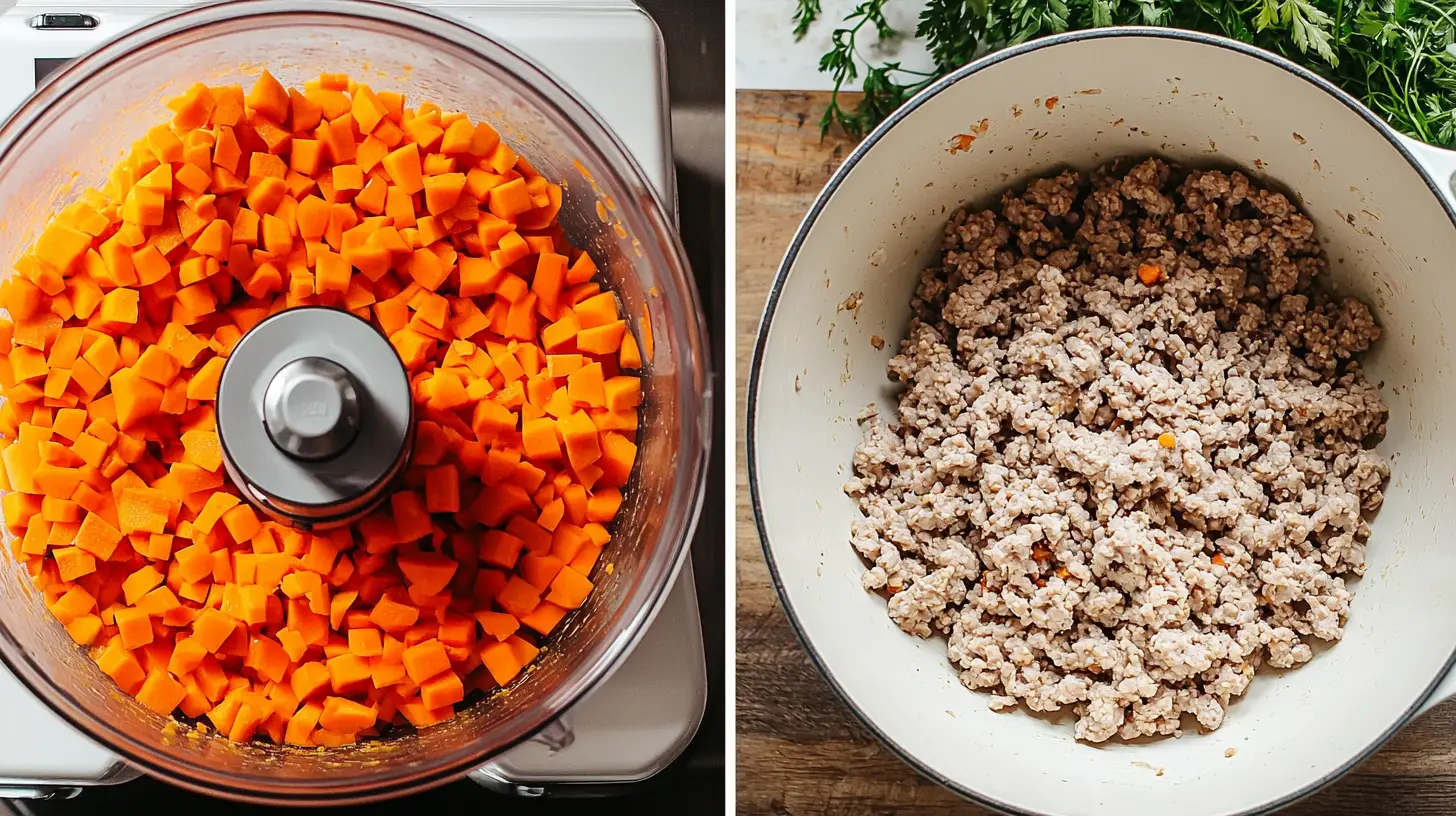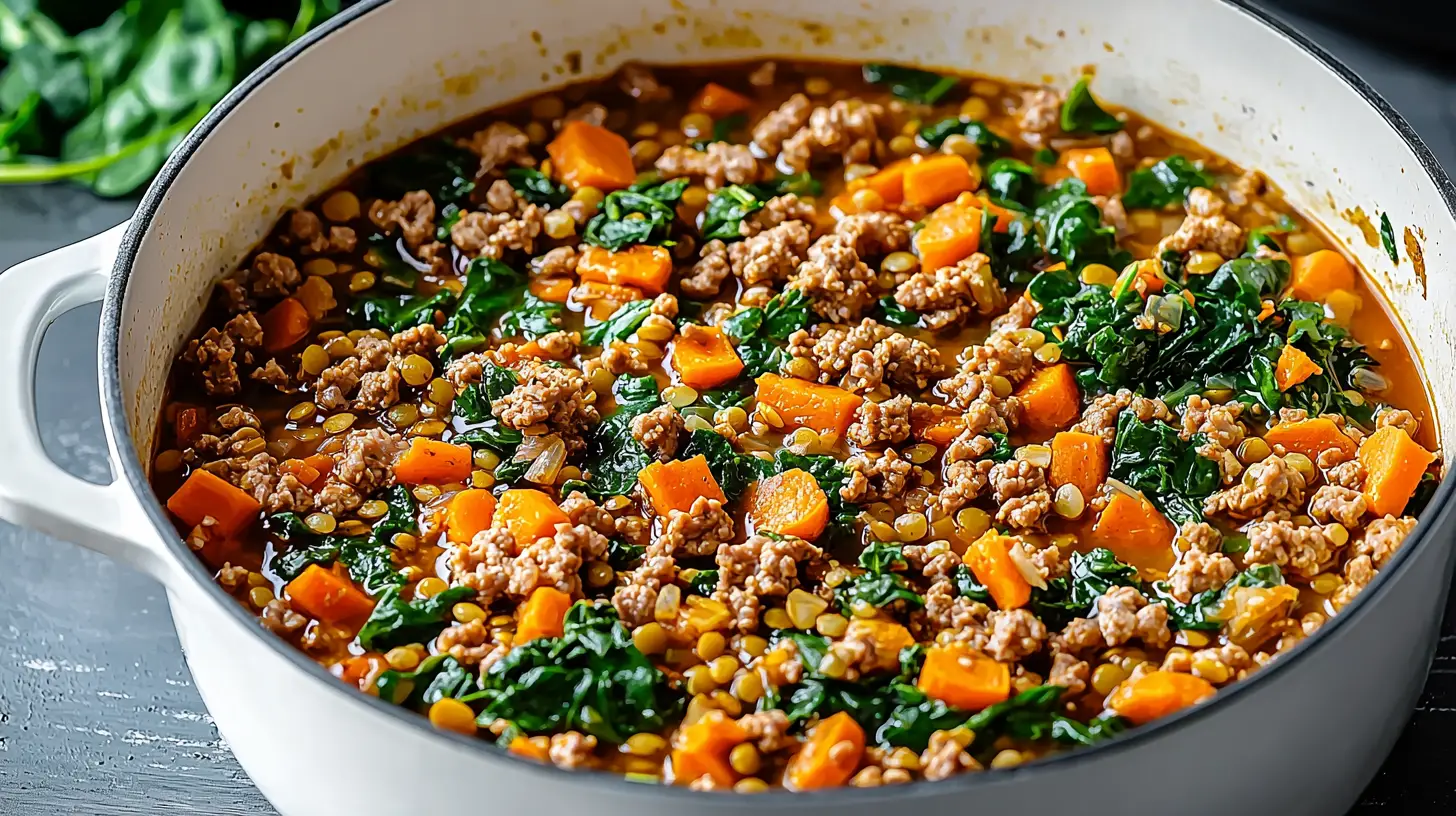Preparing homemade meals for your dog is a wonderful way to ensure they get high-quality, nutritious ingredients that benefit their health. Many store-bought dog foods contain fillers and preservatives that might not be the best for your pet’s well-being. Switching to homemade food allows you to tailor meals specifically to their dietary needs, providing balanced nutrients for a happy, healthy dog. Below, we present a detailed homemade dog food recipe using simple ingredients you likely already have in your kitchen.
Why Homemade Dog Food?
Feeding your dog homemade food gives you complete control over what goes into their meals. This is particularly important if your dog has food sensitivities, allergies, or you’re simply looking to provide them with a better, more balanced diet. Some of the benefits of homemade dog food include:
- Fresh Ingredients: You choose what goes in, ensuring only wholesome, fresh food.
- Balanced Nutrition: Homemade food can be tailored to meet your dog’s specific needs.
- Cost-Effective: In the long run, preparing meals at home can save money compared to premium dog food brands.
- No Fillers or Preservatives: Homemade meals are free from artificial preservatives and fillers commonly found in commercial dog foods.
Balancing Nutritional Needs
It’s essential to ensure that your dog’s diet is balanced and meets their nutritional needs. Dogs require a combination of proteins, healthy fats, fiber, and carbohydrates for optimal health. Here’s a breakdown of what to include:
- Protein: Dogs need plenty of protein to maintain muscle mass, repair tissues, and support overall health. Lean meats like turkey, chicken, and beef are excellent protein sources.
- Healthy Fats: Fats help with nutrient absorption, skin health, and coat shine. You can incorporate small amounts of olive oil or fish oil for this purpose.
- Carbohydrates: Dogs don’t need as many carbs as humans, but healthy carbohydrates like sweet potatoes or lentils provide energy and fiber, promoting good digestion.
- Fiber: Vegetables such as spinach, carrots, and leafy greens provide fiber, which aids in digestion and contributes to a healthy gut.
Always consult your vet before making significant changes to your dog’s diet, particularly to ensure that any homemade recipes meet your dog’s specific caloric and nutritional needs.
Recipe: Turkey, Lentils, and Veggies Delight
This simple and nutritious recipe provides your dog with the essential nutrients they need for a balanced diet. It’s grain-free, making it suitable for dogs with grain sensitivities, and it’s packed with vitamins, minerals, and fiber.
Ingredients:
- 2 carrots, chopped
- 1 large sweet potato, peeled and chopped
- 1½ cups lentils (green or brown), rinsed
- 3½ cups water
- 2 lbs ground turkey or chicken
- 5 oz spinach (fresh or frozen)
Instructions:
- Cook the Lentils: In a medium saucepan, combine the lentils and water. Bring to a boil, then reduce heat and simmer for about 20-25 minutes until the lentils are tender and the water has been absorbed.
- Prepare the Vegetables: While the lentils are cooking, peel and chop the carrots and sweet potatoes into small pieces. You can use a food processor to finely chop them if your dog prefers smaller bites.
- Cook the Meat: In a large pot or Dutch oven, cook the ground turkey or chicken over medium heat. Stir frequently to break the meat into small pieces. Cook until the meat is browned and no longer pink, about 8-10 minutes.

- Combine Vegetables and Meat: Once the meat is cooked, add the chopped carrots, sweet potatoes, and spinach to the pot. Stir well and sauté the vegetables with the meat for about 5-7 minutes until the vegetables soften.
- Mix in Lentils: After the lentils are fully cooked, add them to the pot with the meat and vegetables. Stir everything together to combine the flavors and ensure an even distribution of ingredients.
- Cool and Serve: Let the mixture cool completely before serving it to your dog. Store leftovers in an airtight container in the refrigerator for up to 5 days, or freeze individual portions for up to 3 months. Thaw frozen portions in the refrigerator overnight before serving.
Nutritional Benefits
Each ingredient in this recipe has been carefully chosen to provide your dog with essential nutrients:
- Turkey or Chicken: Lean protein supports muscle health and provides energy. It’s easily digestible and a great source of essential amino acids.
- Lentils: Lentils are an excellent source of fiber, which helps with digestion. They also offer plant-based protein and are low in fat.
- Sweet Potatoes: Sweet potatoes are rich in fiber, vitamins A, C, and B6, and are a great source of complex carbohydrates for long-lasting energy.
- Carrots: Carrots add vitamins A and K, as well as antioxidants and fiber, promoting healthy eyes and skin.
- Spinach: Spinach is a powerhouse vegetable that provides iron, calcium, and fiber, boosting your dog’s immune system and overall health.
Transitioning Your Dog to Homemade Food
If this is your first time switching your dog to homemade meals, it’s important to make the transition gradually to avoid upsetting their digestive system. Start by mixing a small amount of homemade food into their regular dog food, gradually increasing the proportion over a week or two. This will allow your dog’s digestive system to adjust to the new diet.
Monitor your dog’s stool, energy levels, and overall behavior during this transition. If you notice any digestive issues such as diarrhea or discomfort, slow down the transition and give their stomach more time to adjust.

Storage Tips
Homemade dog food can be stored in the refrigerator for up to five days in an airtight container. If you’re making large batches, freezing individual portions is a great option. To do this, divide the food into freezer-safe bags or containers, then store in the freezer for up to three months. Thaw frozen portions in the refrigerator overnight before serving.
Benefits of Homemade Dog Food
Switching to homemade dog food has numerous benefits that go beyond just knowing what goes into your dog’s meals:
- Improved Health: Many pet owners report improved coat quality, higher energy levels, and better digestion when feeding their dogs homemade meals.
- Allergy Control: If your dog has food allergies, making their food at home allows you to avoid allergens and tailor meals to their needs.
- Better Taste: Dogs tend to enjoy the taste and texture of fresh, homemade meals compared to processed kibble.
- Flexibility: You can adjust recipes based on what ingredients are in season or on hand, allowing for variety in your dog’s diet.
Consult with a Veterinarian
Although this recipe includes a balanced selection of protein, vegetables, and fiber, it’s important to consult with your veterinarian before switching your dog to a homemade diet. Your vet can ensure that your dog is getting all the necessary nutrients, and they may recommend adding supplements or vitamins to their diet to meet specific needs, such as calcium, omega-3 fatty acids, or joint support.
Making your dog’s food at home is a rewarding and beneficial experience that ensures they receive the freshest ingredients possible. This turkey, lentil, and vegetable recipe is a great starting point for providing your dog with nutritious meals. As always, take it slow when transitioning your dog to homemade food and consult your vet to ensure the meals meet your dog’s unique nutritional needs. By investing a little extra time and care, you can improve your dog’s health, happiness, and overall quality of life.

